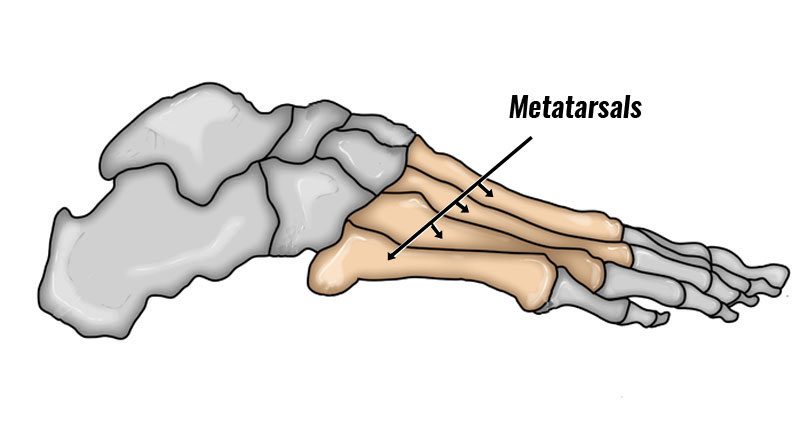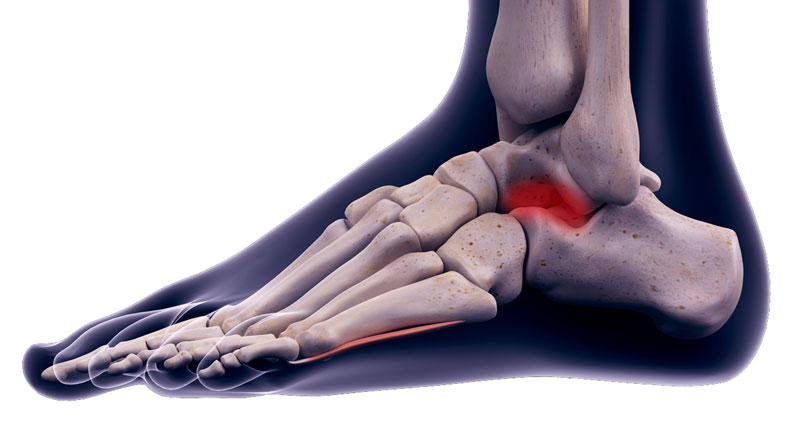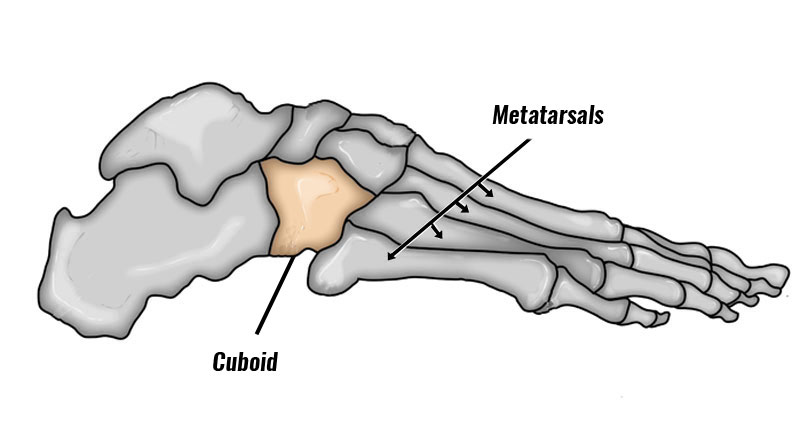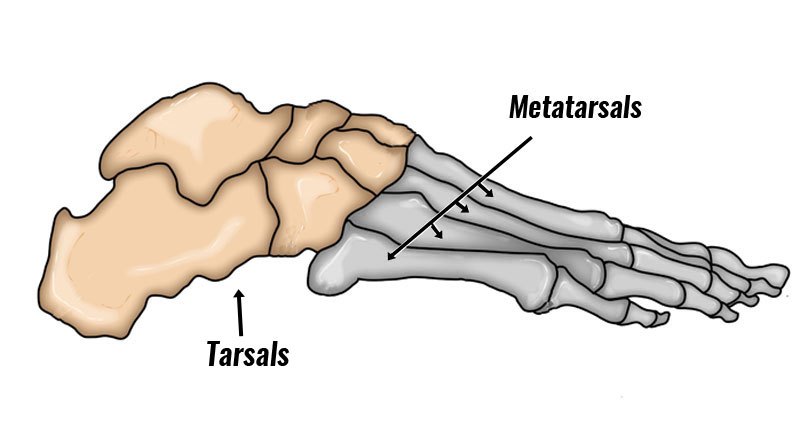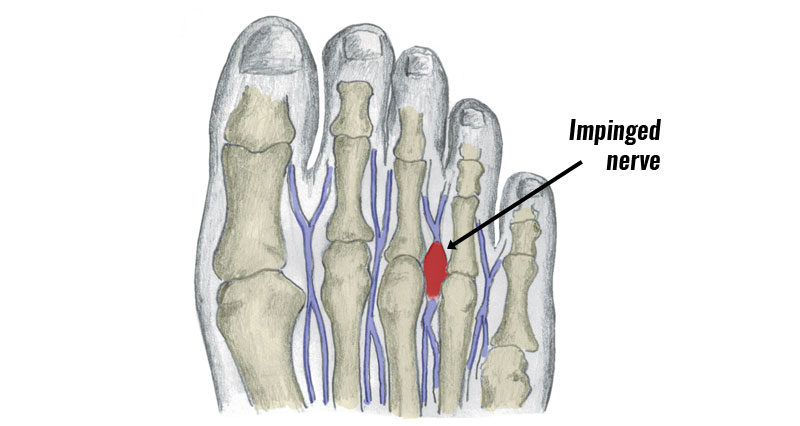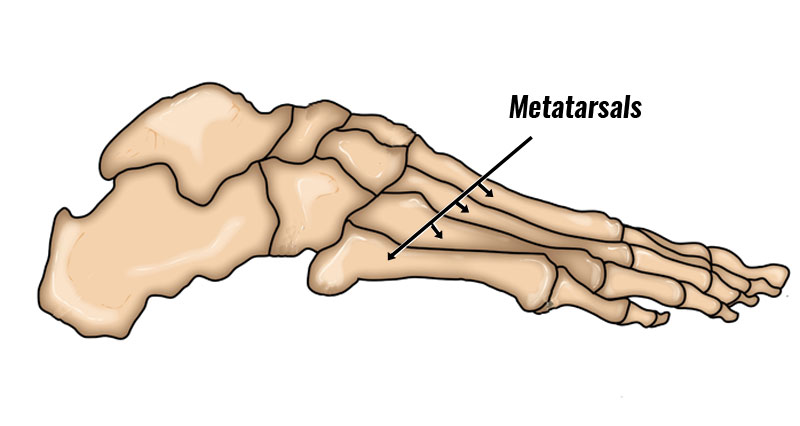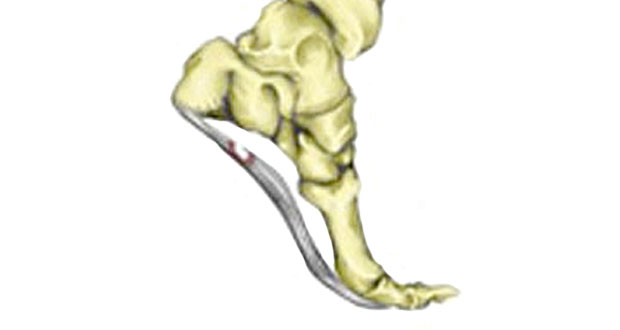A metatarsal stress fracture is a hairline fracture in one of the long metatarsal bones in the foot. They occur through overuse or poor foot biomechanics. The second metatarsal is the bone most commonly injured.
Medically reviewed by Dr Chaminda Goonetilleke, 20th Jan. 2022
Metatarsal stress fracture symptoms
Symptoms of a metatarsal stress fracture include:
- Pain in the forefoot that develops gradually over time.
- Pain is usually located towards the middle, or front of the foot.
- Symptoms are made worse with weight-bearing activities such as walking, running or dancing.
- Your foot will be tender to touch. There may be a specific tender spot on the bone where the fracture is located.
- Swelling is often present.
- An X-ray will often not show the fracture until two or three weeks after it has started to heal.
What is a metatarsal stress fracture?
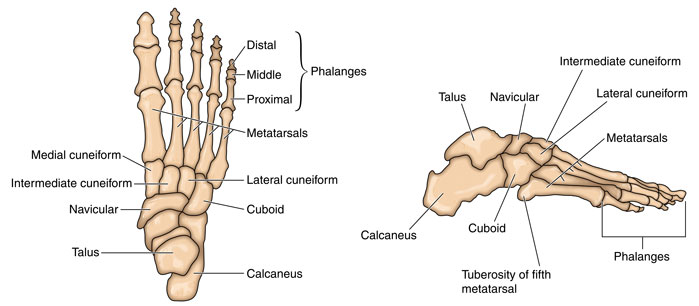
The metatarsals are the long bones in the foot which connect the tarsal bones in the ankle to the phalanges bones of the toes.
Metatarsal fractures can be either acute fractures or stress fractures.
- An acute fracture is caused by a direct impact or trauma such as being trodden on in football by a player wearing football boots with studs.
- A stress fracture occurs gradually over time from repetitive strain or overuse, for example in long-distance runners.
A metatarsal stress fracture most likely involves the second, third or fourth metatarsal bones. They are the second most common location for a stress fracture in sport, after tibia stress fracture (shin).
The most location for a metatarsal fracture is the second metatarsal, especially in those whose second toe is longer than their big toe.
It is also more common for those feet to roll in too much or flatten (overpronate). This is because the first metatarsal bone is in a dorsiflexed (foot pointing upwards) position. As a result, this places a greater load on the 2nd metatarsal. Stress fractures in the other metatarsals are less common, although they do occur.
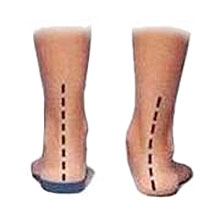
What causes a metatarsal stress fracture?
- Overuse! They are common in army recruits (often called a march fracture), runners, ballet dancers, and gymnasts. Repetitive strain on the bone eventually results in a stress fracture.
- Overpronation – where your foot rolls in too much, or flattens.
- Over supination – where your foot has a particularly high arch and rolls outwards. This means it is rigid and does not pronate enough to absorb forces from running.
Metatarsal stress fracture treatment
- Rest from weight-bearing activities as much as possible. Continuing with normal training, especially weight-bearing activities will not allow the bone to begin to heal.
- Ideally, an X-ray should be taken at the beginning of the rest period.
- The rest period should normally be around 4 weeks to allow sufficient healing, after which a second X-ray should be taken.
- This may confirm the presence of a stress fracture as it should show up as new bone growth at the point where the fracture occurred.
- For those whose job requires them to weight bear, a walking boot may be used to reduce the strain on the bones and soft tissues of the foot.
- If you think abnormal foot mechanics such as overpronation or over supination has contributed then see a physio or podiatrist to have orthotics (shoe inserts) fitted.
When can I start running again?
- Begin training again only once walking is pain-free and all tenderness over the bone has gone.
- Start with very gentle jogging and gradually build up the duration and speed of your runs.
- Increase distance only by 10% each week maximum.
